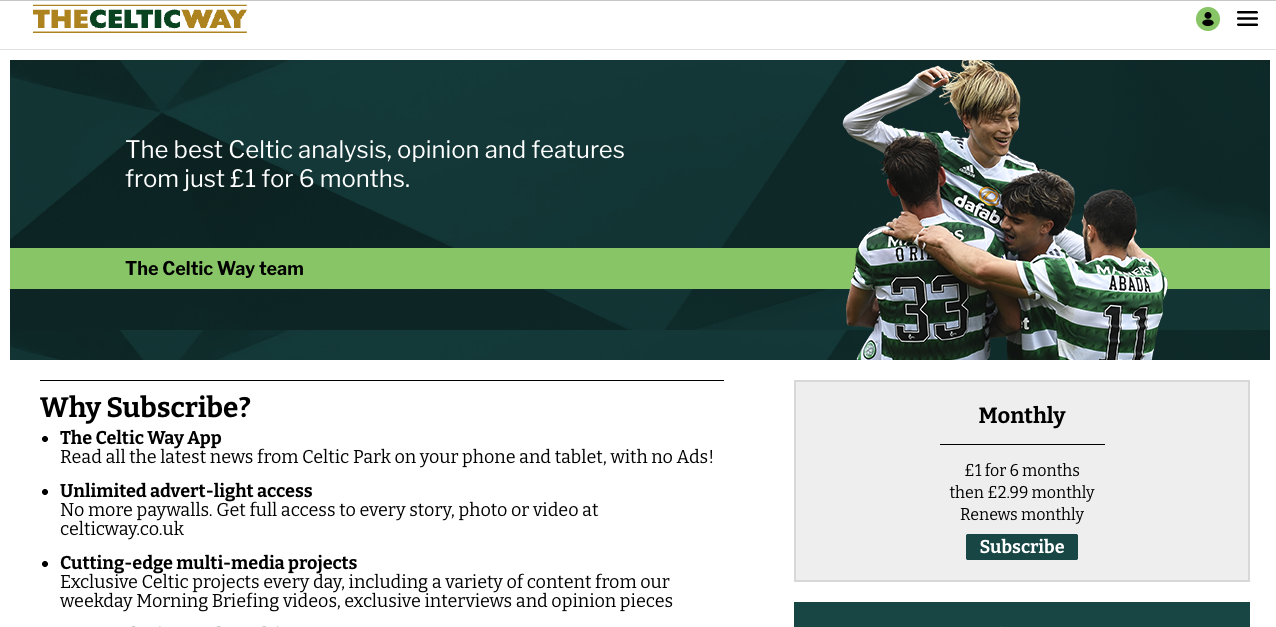
Newsletter
Newsletter
A new WAN-IFRA report provides nine case studies of how publishers have developed their operational and organisational data super-powers.
31st August 2023

In the Pugpig weekly media bulletin, Pugpig’s consulting services director Kevin Anderson and digital growth consultant James Kember distill some of the best strategies and tactics that are driving growth in audiences, revenue and innovation at media businesses around the world.
If you would like to learn more about how Pugpig consulting could help you, or have any questions or feedback, please email us at info@pugpig.com.
By James and Kevin
In WAN-IFRA’s Data Champions in the Newsroom report, they took nine case studies from publishers from Europe, the US and Asia and analysed how they are leveraging data champions in their newsrooms to drive adoption of analytics. They chose the nine publishers because they had “embraced data as a core part of their everyday newsroom strategy”. The report includes publishers at various stages in their data journeys. This is helpful to set expectations for those just starting their data efforts and also to provide roadmaps for other publishers, no matter where they are at on their journey, to increase their sophistication in using analytics.
In almost every news organisation data now plays a role, from simple web analytics to understand popularity of content to advanced data models assessing propensity to subscribe. However, it wasn’t always so. When analytics services first came onto the scene a decade ago, report author Neha Gupta said many newsrooms were resistant, seeing it as a “taboo to use data to help inform their editorial strategy”. They compared this to the current uncertainty around the future impact of AI and the mistrust that many have for new technologies. And this is an important point: Cultural issues play a critical role in the adoption of new technologies. It’s not just about technical implementation, and Gupta points out that “many journalists – and some editors – still need convincing about the power of data in their editorial plans”.
How do publishers go from scepticism to adoption? Christoph Mayer, Partner and Managing Director AI and Data Science at German media consultancy Schickler, outlined four phases:
Based on our work, however, this is not the lived experience for a lot of media companies. These phases imply a publisher of a certain scale and size, and it also implies that this is a linear journey. There are many organisations we have worked with that don’t have a data science team or a cloud-data warehouse functionality but are able to leverage data through the use of their digital analytics and website optimisation tools. Moreover, data science is no longer only available to publishers with large data science functions. Customer Data Platforms like BlueConic, Lytics and many others enable publishers to easily capture and model their data, without the need to build their own complex models. Whereas vendors like Sub(x) offer AI “as-a-service” allowing for targeting subscription offers and a hands-off implementation. In some cases, these capabilities are driven by publishers building up their internal teams, while for small and medium publishers, they have been enabled by SAS vendors building products that allow them to effectively outsource their data science needs.
Before you start collecting data, it is important to set goals and understand what data you need to achieve them. The report featured a great quote from Saemmool Lee, Head of Digital Innovation at Dong-A Ilbo who said that “publishers must persevere to be data-informed and convert data into effective strategy, instead of making it the ultimate goal”. For too many organisations, they plan how they are going to collect data but not how they are going to use it. Without a strategy for leveraging the data it holds no value.
So what’s the best approach to collecting data? The easiest way is to rely on cookie-based analytics tools, but with the demise of third-party cookies, it has made targeting more difficult. Therefore, publishers have shifted focus to collecting first-party data, making turning unknown users into knowns is an increasingly important tactic. WAN-IFRA pointed to Amedia, a Norwegian publisher, which established their own first-party ID back in 2014 and have since acquired 2.25 m registered users. This enabled them to gain a deep understanding of their audience and to better target their subscription offering. Similarly the Independent has an A2K strategy has 11 paths to registration that has enabled them to build a much closer relationship with their audience.
However, the technology is only part of the story. Teams need to be trained, and if you want to break down data silos, you also need to break down organisational silos. We recently used this bulletin to explore how Fortune has built cross-functional teams and also discussed Robin Kwong’s approach to editorial project management. In both pieces we reached a similar conclusion, that bringing the right people around the table is an essential component to building successful teams in publishing companies that have previously been naturally divided between editorial and commercial. This WAN-IFRA report advances that point: Every publisher they spoke to mentioned the importance of building cross-functional teams to enable the best use of data.
Switzerland’s Neue Zürcher Zeitung achieved this by setting up an audience management team within editorial which could act as a bridge between data and editorial. Ten years ago, when data was first being brought into news organisations the typical approach was to create a data function separate from editorial and with largely commercial ambitions. However, as is demonstrated by WAN-IFRA’s case studies, the best news organisations have embedded that data team within the centre of the organisation and encouraged collaboration with editorial.
According to Christoph from the publishing consultancy Schickler, he has seen small publishers with only one or two data scientists producing great work. We would go a step further and say that a business doesn’t need to employ any data scientists to leverage data. They just need the right tools and a curious approach. At Pugpig consulting, we are working with several news organisations and B2B publishers to help up skill their teams to use the data that they’re capturing to achieve their ambitions.
The organisational and operational heavy lifting is proving to be a key enabler of success for publishers and allowing them to weather the changes in the industry. They are able to deliver three important results:
As publishers gain the ability to gather data on user behaviour and create detailed user profiles, personalisation becomes a key focus for many. This was highlighted by several publishers mentioned in the report. Belgium publisher Mediahuis have been building “data-driven customer journeys” for several years. They leveraged the data captured from user engagements across their websites and apps to serve personalised newsletters, notifications and digital experiences. In their case, they created an “article DNA” project, which built profiles of users’ interests and fed them into a recommendation engine to service up content of interest.
However, as with dynamic paywalls, personalisation doesn’t need to be complicated. It could be as simple as curating different newsletters for different users based on broad content topics that can be identified and tagged on the website and app. It can also be defined by the user during their onboarding experience allowing them to declare their interests up front. The more complex types of personalisation try to predict a person’s interests based on past behaviour. As noted earlier, there are tools that can help to automate this by offering AI as a service. However, to effectively use such platforms, the publisher will need to have the basics of data collection established.
One area where there was less alignment between the publishers was in the role of data and AI in the curation and editing of content. For Trib Total Media, a U.S. publisher based in Pennsylvania, data allowed them to reduce the need for labour intensive content curation, they said. They built an artificial intelligence platform called MeSearch, which provided their audience with a personalised user experience by analysing website content and presenting a hyper-localised view.
However, Shea Driscoll, Digital Editor, South China Morning Post said they take a different approach and described the company as data-informed, rather than data-driven. “We gather data to make decisions, complemented by editorial judgement”, he said. Clearly where to draw the line between automation and editorial curation is different for different organisations.
Finally, the report explored how data was being used to boost engagement. Amedia, the Norwegian newspaper group, started a project in 2014 to engage young people and female readers. They carried out data analysis of 660,000 news items and found that women were underrepresented. To fix it they made an editorial decision to use more women as sources and created a “gender dashboard” to track their progress.
They also analysed the content that young people were interested in and focused on writing more of it. However, this required asking the user for their date of birth, which would’ve needed to be justified to the user. These are great examples of simple, but powerful, approaches to data. By focusing on a couple of key metrics they were able to significantly advance their readership strategy.
Overall, the report shows just how essential data has become to publishing businesses, and successful publishers are using data to respond to the current challenges in the industry: the major shifts in social platforms and expected shifts in audience development brought about by AI chatbots potentially replacing search. But these case studies from WAN-IFRA show that whatever a publisher’s size, budget and capabilities, that data is a critical element in building a sustainable publishing business. First-party data and personalisation are capabilities that are allowing publishers to foster the direct relationships with audiences that will allow them to weather the changes in the industry today and tomorrow.
Here are some of the most important headlines about the business of news and publishing as well as strategies and tactics in product management, analytics and audience engagement.

Newsletter

Newsletter

Newsletter

Newsletter

Newsletter